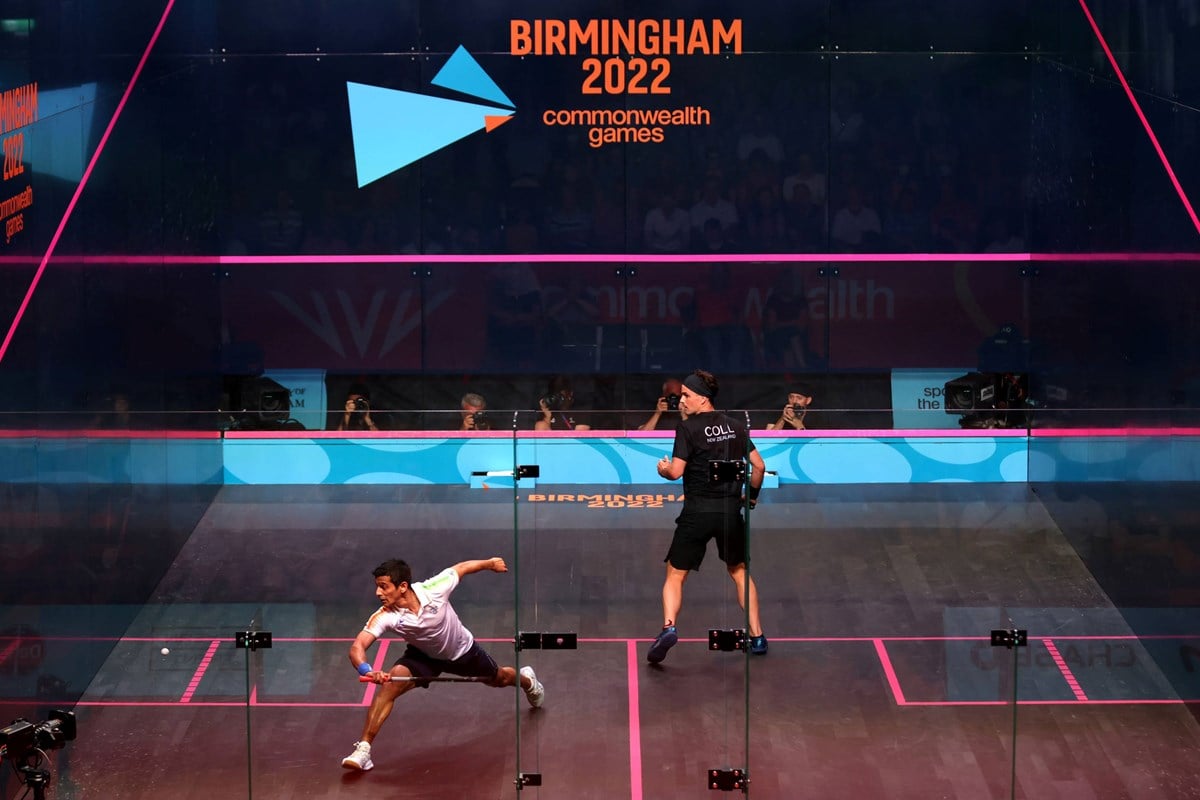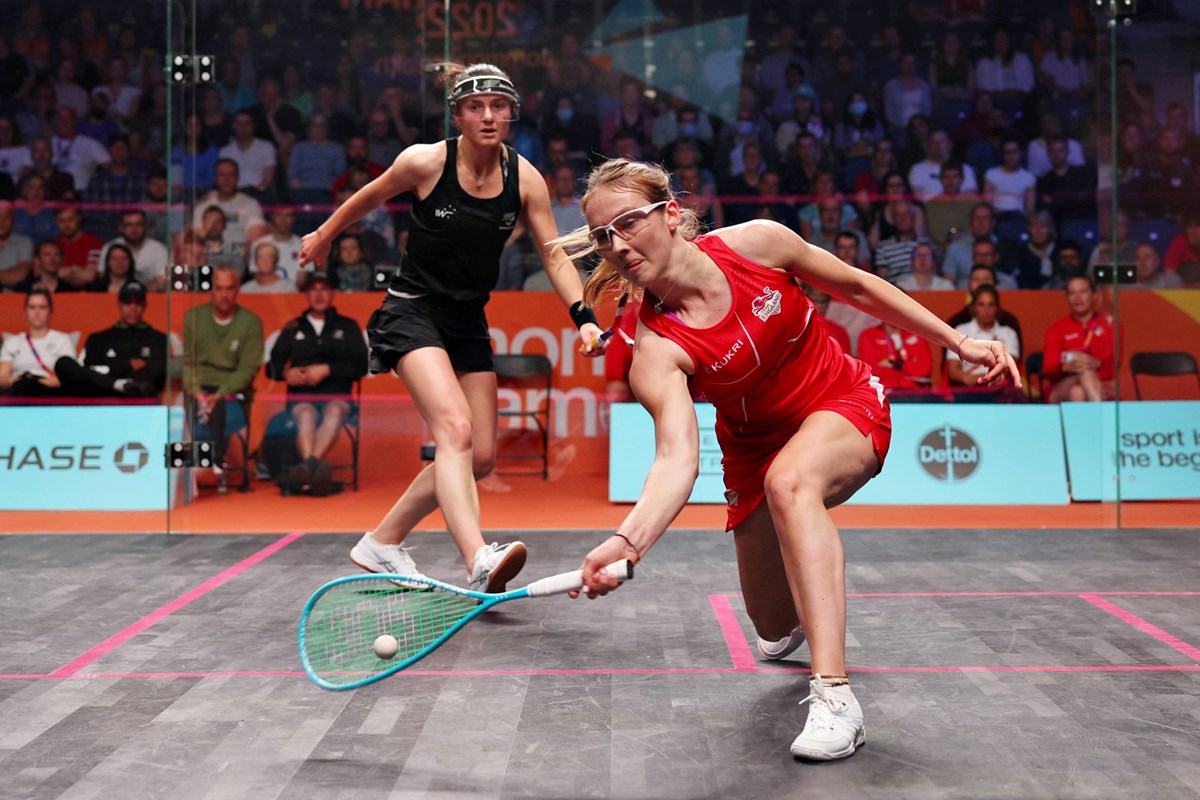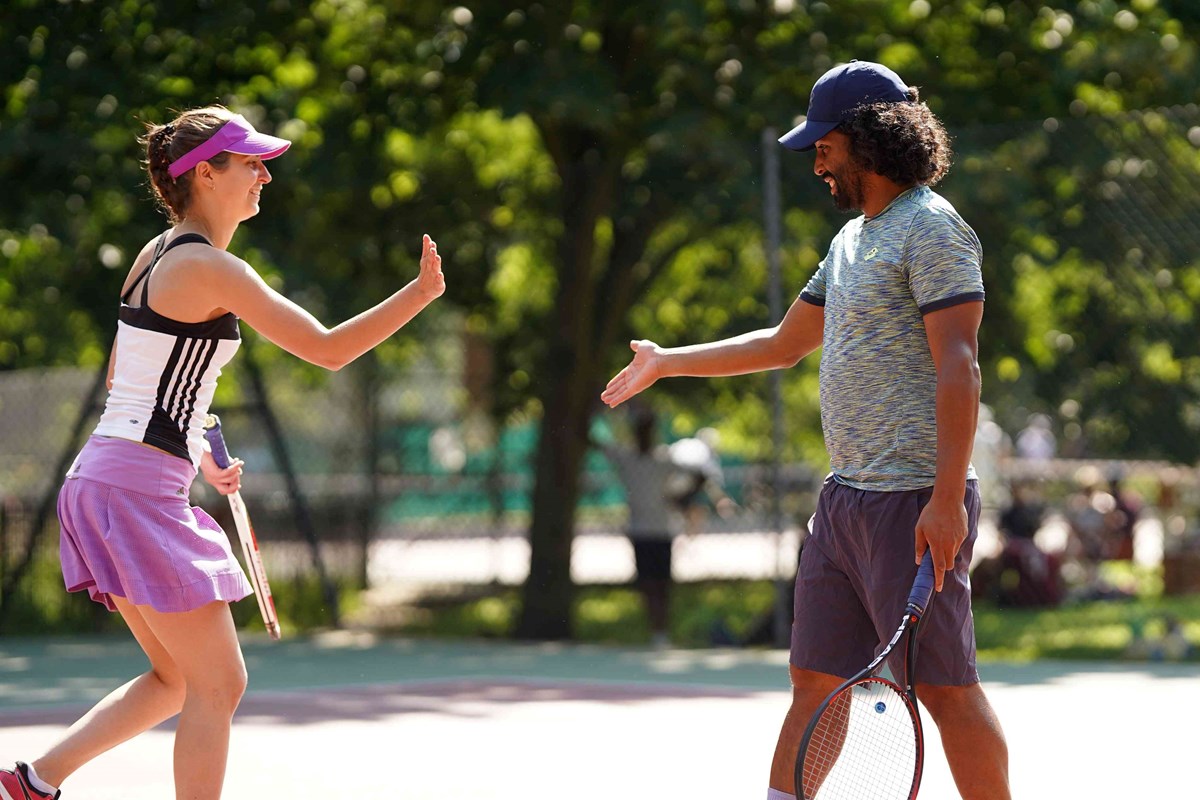Tennis vs squash

From the courts to the different rackets and balls - find out more about the similarities and differences between tennis and squash.
What are the differences between tennis and squash courts?
Tennis and squash courts are very different. A tennis court is a rectangle area with a net through the middle, dividing the players, and can be made of different surfaces – including concrete, grass and clay.
Squash on the other hand is played in a closed area – 9.75m x 6.4m – with walls all the way around the court, which players must hit the ball off. Because of this, most squash courts are indoors, while tennis can be played outside or inside.
The markings on the court are different too. A tennis court will be made up of a baseline at the back, two service boxes halfway between the net and the baseline and two sets of tramlines on either side. A squash court, however, is split into a front line and a half court line, which separates the court into a right and left service box.
What are the different types of equipment for tennis and squash?
Let’s start with the rackets. While they both use similar strings, a tennis racket is around six centimetres longer than a squash racket (27 inches for adult rackets), and tends to have a rounder racket head, while the squash racket is squared off at the top.

It’s a similar story when it comes to shoes. Tennis and squash trainers may look almost identical and for the most part are very similar but there can be some key differences the more you play.
Tennis trainers can have more variables depending on the surface you’re playing on – however, for most courts and recreational play, you’ll want to stick to something with a sturdy outer sole that gives you some cushioning, so you feel comfortable.
Squash trainers on the other hand have to be non-marking and have a sticky grip, with far less variation.
The differences between a tennis and squash ball
Tennis and squash balls are made from different materials and come in different sizes.
A tennis ball is made of rubber with different colours of felt around the outside, while a squash ball is much smaller and just made from rubber. Tennis balls are larger so players can track them more easily on both sides of the court.
In tennis, you can get different coloured balls, which reflect the size and compression of the ball. For example an orange ball maybe more suitable for beginners as it is 50% compression and doesn’t bounce as much.
Squash has the same – a 2-Dot ball used by the pros, doesn’t bounce as much as yellow, red or blue dot balls, which are used more for developing players.
What are the rule differences between tennis and squash?
Tennis and squash are two very different sports in their own right and don’t share too many similarities when it comes to rules.
In tennis, you have to hit the ball over the net, aiming to land the ball in the court to form what’s called a rally. The point continues until someone hits a winner (the ball bounces twice) or someone makes a mistake e.g. hits the ball into the net or outside the court.

Squash however, is played between two players next to each other on the court. You have to hit a serve from inside the service box against the front wall and then continue to rally, taking it in turns to hit the ball at the wall.
Like tennis, the ball can only bounce once and you win points if your opponent is unable to return your shot or if they make a mistake, e.g. the ball touches the out line or doesn’t bounce in the court.
Read about how you can start playing tennis
Learn more about our junior tennis programme - LTA Youth
Scoring
Tennis matches can be scored in several different ways, but the most common is by sets and games. To win one set, you have to win six games and be leading by two clear games.
Similarly, to clinch a game, you must win four points with a two-point advantage. Games are scored as:
- 15 – one point
- 30 – two points
- 40 – three points
If the game goes to 40-40, this is called deuce, but you still need to win by two clear points to win the game.
However, you don’t always have to score when playing tennis, just have fun getting on court and having a hit with your friends and family.
Squash is also played in sets made up of 11 points, but you still must win by two clear points. Unlike tennis though, the server only changes when they lose a point on serve – for example, you could win all 11 points in a row, and you would keep serving for the whole set!
What are the different shots used in tennis and squash?
Both sports share a lot of the same shots – serve, return, volley, forehands, backhands, drop shots, lobs, the list goes on and on.
Some shots specific to squash include drives, boasts and a nick. A straight drive is the name for a shot on either the forehand or backhand side, hit parallel and close to one of the side walls, landing deep in the court and close to the back wall.
A boast is similar to a drive but needs to hit the side or back wall before it hits the front wall. With the nick, however, the goal is to hit the ball into an area called the nick, which is where the side wall meets the floor and causes the ball to roll out of bounds.
Frequently asked questions
There are a lot of similarities between the two rackets, so in theory, yes you can, but the smaller squash racket makes it much easier to react quickly to shots and provides more control.
Unfortunately, not, tennis balls are too big and bouncy to play squash with properly.
There are a lot of skills that translate from squash to tennis – especially speed and movement around the court.
A lot of the shots in both sports are very similar, from forehands to volleys, so squash can help you work on your hand eye coordination and develop these shots for the tennis court. Squash uses primarily a continental grip as you have less reaction time – this often translates to strong volleys in tennis.
Start your tennis journey today
Want to start playing tennis for the firs time, or just looking to get back into the game? Find and book a court or a coaching session with us today.
